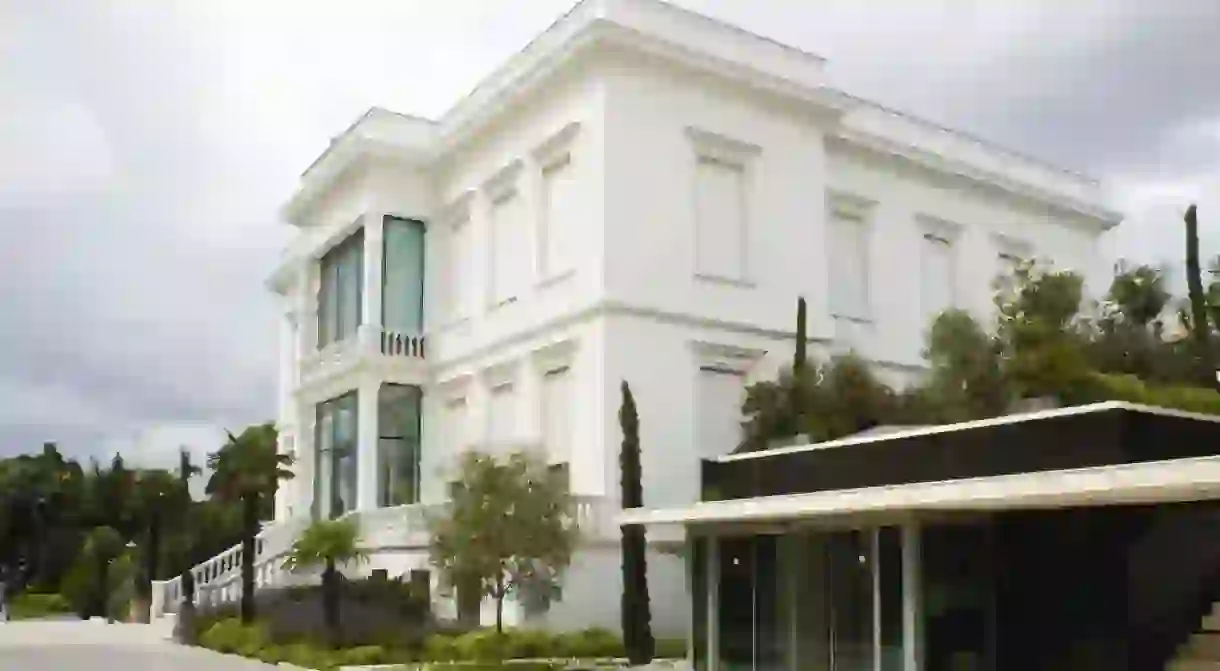A Brief History of the Sakıp Sabancı Museum

Located in Emirgan, a wealthy neighborhood known for its stunning architecture right by the Bosphorus’ edge, the Sakıp Sabancı Museum towers above, almost hidden by its lush garden. We take a look at how the former residence of one of Turkey’s most prominent families became one of Istanbul’s most important museums.
The villa, which now houses the museum, was commissioned by Prince Mehmed Ali Hasan of the Hidiv family of Egypt from Italian architect Edouard De Nari in 1925. Used as a summer residence for many years by the family, the villa was purchased by industrialist Hacı Ömer Sabancı in 1951. The house became known as the ‘Atlı Köşk,’ (mansion with the horse) due to the horse statue that was installed in the garden, a work by French sculptor Louis Doumas dating back to 1864. The second horse sculpture was once a fixture in Sultanahmet Square, before it was looted by Crusaders in 1204 and taken to the Basilica of San Marco in Venice.
After Hacı Ömer Sabancı’s death in 1966, the mansion was taken over by the family’s eldest son, the famous businessman Sakıp Sabancı, in 1974. At this point, the estate had a rich collection of calligraphy and paintings from Sabancı’s private collection, and in 1998 (along with the antique furnishings) the mansion was given to the Sabancı University by the Sabancı family in order to be transformed into a museum.

In 2002, the mansion, with a new modern gallery annex, was opened to the public as the Sakıp Sabancı Museum. The museum’s most notable exhibitions include Picasso in Istanbul, which ran in 2005 with a collection of 135 previously unexhibited works; Master Sculptor Rodin in Istanbul, with 203 works loaned from the Musée Rodin in Paris; Monet’s Garden, featuring works from the artist’s late period; Anish Kapoor in Istanbul, focusing on the artist’s marble and alabaster works previously unseen by the public; and Joan Miró: Women, Birds, Stars, which focused on Miró’s mature period heavily inspired by his observations of Mediterranean geography and its people.
The museum’s permanent exhibitions include the Calligraphy and the Arts of the Book Collection, consisting of Korans, calligraphic albums and panels with Koranic verses, and illuminated documents bearing the tuğra (imperial cipher) of the Ottoman sultans. The museum’s Painting Collection features excellent examples from the early period of Turkish painting as well as the works of foreign artists who resided in Istanbul during the later years of the Ottoman Empire. The museum’s entry-level rooms are also an exhibition on their own terms with preserved furnishings and decorative objects hailing from the 18th and 19th centuries.
On the museum’s terrace, the famous restaurant Müzedechanga serves an excellent all-day menu, transforming into a fine dining venue with a breathtaking Bosphorus view in the evenings.
📅 Open Tuesday, Thursday, Friday, Saturday, Sunday: 10am-6pm; Wednesday: 10am-8pm; closed Mondays.













